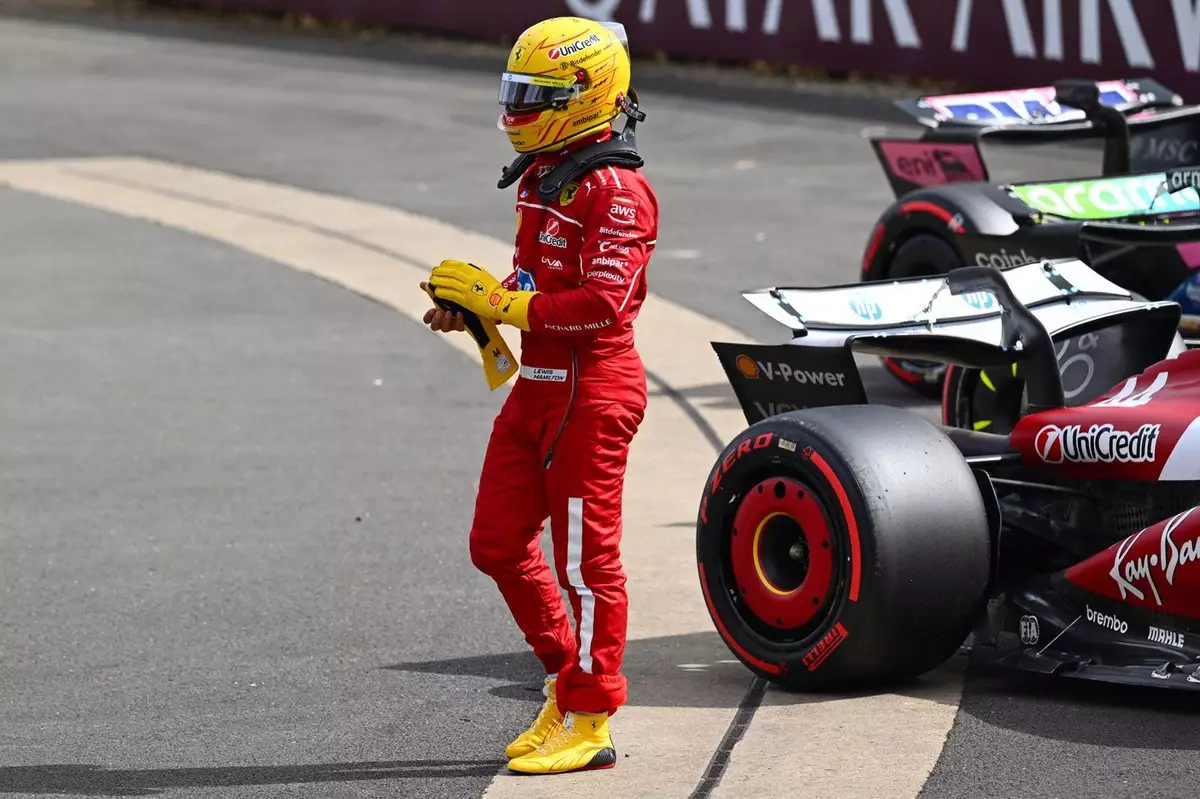In the high-stakes realm of Formula 1, perfection rarely comes easily. Lewis Hamilton, a master of resilience and relentless ambition, exemplifies this ethos as he prepares for yet another challenging British Grand Prix. Despite a promising qualifying session that showcased undeniable speed and an improved performance overall, Hamilton’s final effort was thwarted by a small but consequential mistake. This setback underscores the brutal reality of racing at the pinnacle—where a fraction of a second can determine destiny, and even the most talented drivers are vulnerable to the unforgiving nature of racing physics.
What sets Hamilton apart is his unwavering commitment to growth. His acknowledgment of progress—both in car setup and team dynamics—reflects a mindset rooted in continuous improvement. The delicate balance of pushing boundaries while maintaining control is as much about mental fortitude as it is about technical prowess. Hamilton’s ability to interpret and adapt to his evolving relationship with his engineer demonstrates that success is often a function of collaboration and trust. His candid reflections on his qualifying laps reveal an honest self-assessment, a trait essential for anyone who strives to ascend beyond their limits.
Technical Challenges and the Lingering Demons of Understeer
The crux of Hamilton’s qualifying misfortune lies in a familiar foe: understeer at Turn 16. This corner, notorious for testing driver skill and car handling, exposed vulnerabilities in the current setup. Despite the upgrades and the positive momentum generated from Austria, the technical intricacies of car behavior continue to challenge engineers and drivers alike. Hamilton’s brief loss of control illustrates how fine-tuned the balance must be in Formula 1, where a minor miscalculation can culminate in lost time and missed opportunities.
Yet, the analysis of these difficulties is vital. For Hamilton, each lap and error becomes a lesson, fueling his determination to refine his craft. This season’s narrative underscores that technical setbacks are not just obstacles but catalysts for innovation and adaptation. Hamilton’s focus on improving process, as he mentions, speaks volumes about his understanding that success is not static but an ongoing evolution.
The Personal and Competitive Dimensions
Beyond the technical realm, Hamilton’s relationship with his team and the larger racing community plays a pivotal role in his performance. His recent positive interactions with his new engineer symbolize a vital turning point; a reminder that effective communication and mutual understanding are foundational to achieving optimal results. The camaraderie and trust fostered impel him to confront challenges with renewed vigor, transforming frustration into motivation.
Furthermore, Hamilton’s move to Ferrari for 2025 adds a new layer of emotional intensity and legacy. Racing for the iconic team at a home race amplifies his desire to excel—not only for personal achievement but also to inspire the British fans and honor the sport’s rich history. His acknowledgment of the formidable competition from McLarens and Red Bulls reveals a competitive awareness that fuels his resolve. When he states, “when there’s a will, there’s a way,” it illustrates a mindset that accepts difficulty but refuses to surrender. It embodies a powerful spirit that refuses to be subdued by setbacks and illustrates why Hamilton remains a transcendent figure in motorsport.
The Road Ahead: Embracing the Challenge
While the pursuit of pole position might seem elusive this weekend, Hamilton’s attitude embodies a vital truth: success is rooted in resilience. His readiness to give his all, despite the daunting task ahead, highlights that greatness often emerges not from flawless execution but from the tenacity to persevere through adversity. The British Grand Prix is more than a race; it’s a testament to his unyielding spirit, and fans should expect nothing less than a full-throttle effort from one of racing’s most dedicated athletes.
Throughout the season, Hamilton’s journey demonstrates that setbacks are merely setups for a greater comeback. His focus on continuous improvement, his reevaluation of team dynamics, and his unwavering commitment to competing at the highest level all converge into the narrative of an athlete driven not just by the desire to win but by the desire to push the boundaries of human potential. The thrill of racing—its unpredictability, its intensity—resides in moments like these, where resilience transforms hurdles into stepping stones for glory.

